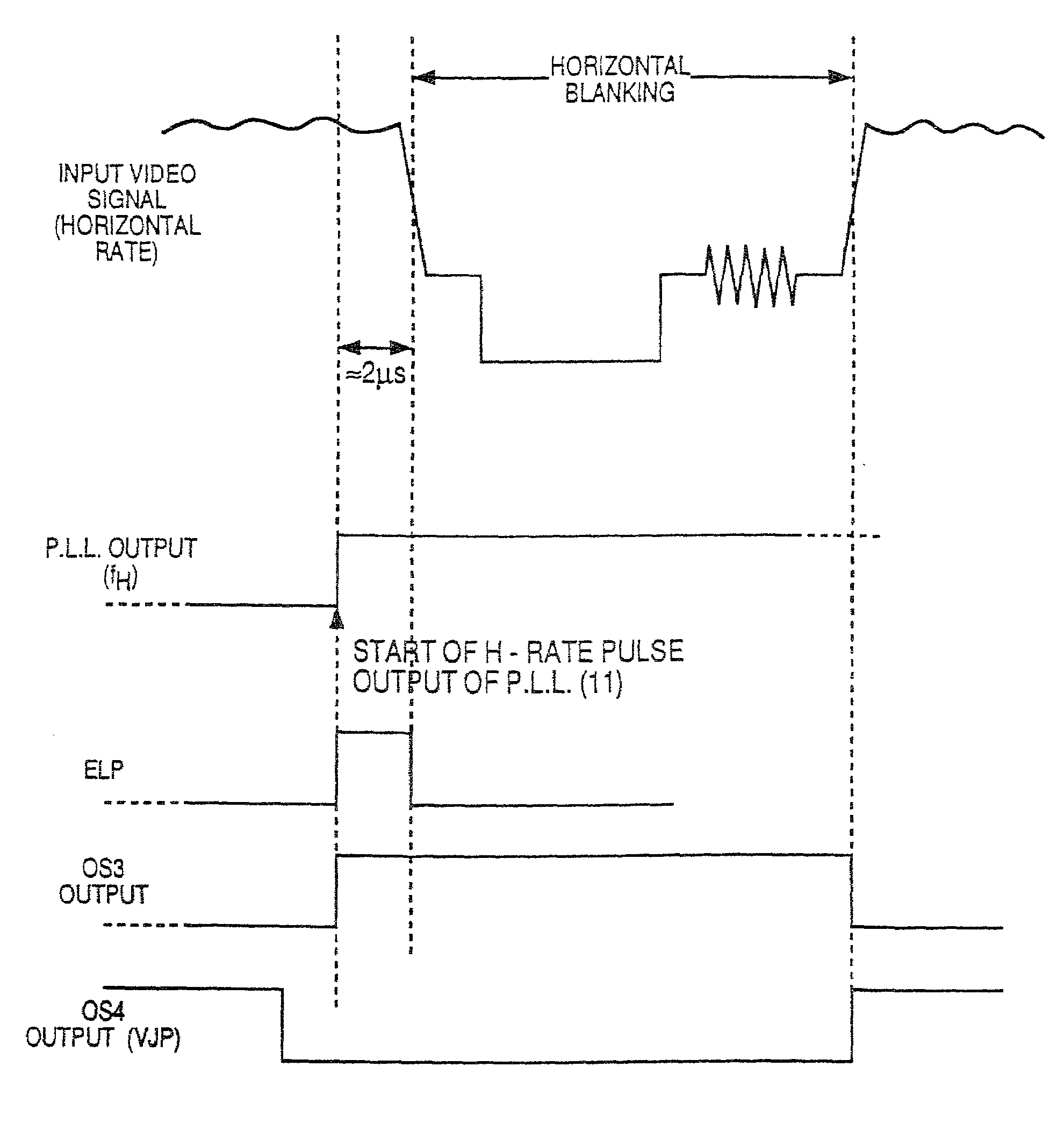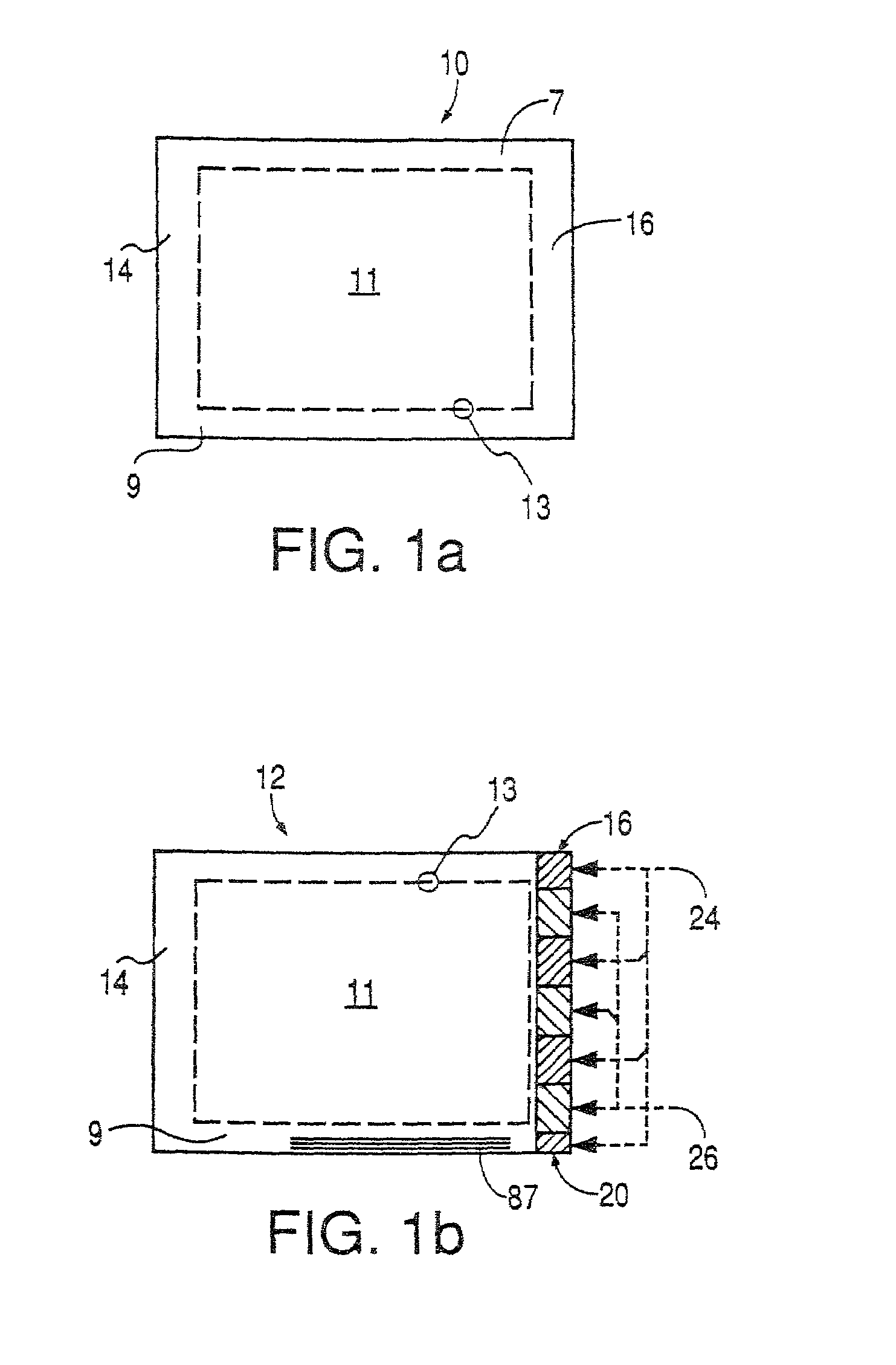Method for modifying a copy protected video signal with a negative amplitude pulse
a negative amplitude pulse and video signal technology, applied in the field of video anti-copy process, can solve the problems of substantial picture degradation of an unauthorized copy, inconvenient synchronization of vcr or tv receiver, etc., and achieve the effect of enhancing the “basic” copy protection process and maximizing the effectiveness of the basic copy protection process
- Summary
- Abstract
- Description
- Claims
- Application Information
AI Technical Summary
Benefits of technology
Problems solved by technology
Method used
Image
Examples
Embodiment Construction
Horizontal Rate (Checker) Signal Modification
[0076]FIG. 1a shows a normal television picture 10, (without showing any actual video information), i.e. including the left and right overscan portions 14, 16 and top and bottom overscan positions 7, 9. The part of the picture inside the dotted line 13 is the visible video 11.
[0077]The overscan portion of a television picture, as is well known, is that portion of the television picture not viewable on a standard television set. Because of design limitations and aesthetic considerations, standard TV sets are adjusted by the manufacturer to display somewhat less than 100% of the transmitted picture area. The portions of the television image which are not normally viewable are called the overscan area. These portions are viewable on a professional-type video monitor with underscan capability. However, all standard television receivers operate in an overscan mode, and hence the added checker pattern and the modified lines at the end of each f...
PUM
 Login to View More
Login to View More Abstract
Description
Claims
Application Information
 Login to View More
Login to View More - R&D
- Intellectual Property
- Life Sciences
- Materials
- Tech Scout
- Unparalleled Data Quality
- Higher Quality Content
- 60% Fewer Hallucinations
Browse by: Latest US Patents, China's latest patents, Technical Efficacy Thesaurus, Application Domain, Technology Topic, Popular Technical Reports.
© 2025 PatSnap. All rights reserved.Legal|Privacy policy|Modern Slavery Act Transparency Statement|Sitemap|About US| Contact US: help@patsnap.com



